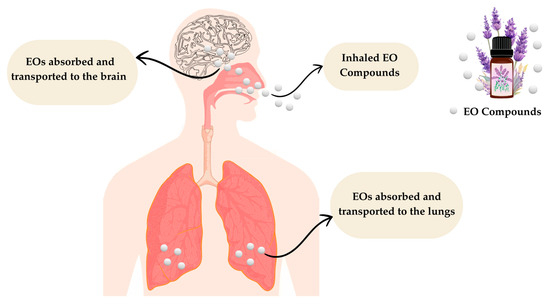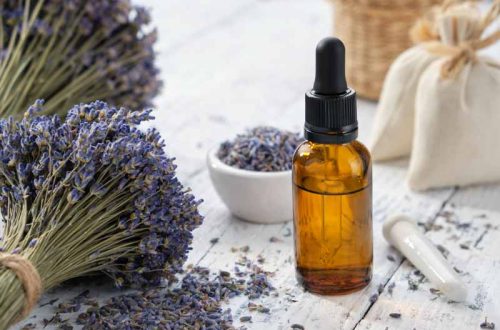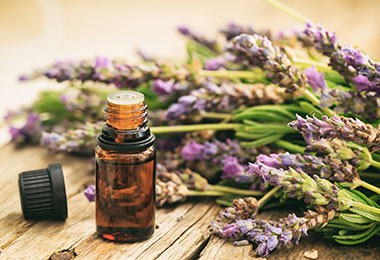Inhalation represents the most direct and immediate method for experiencing the therapeutic benefits of essential oils. When inhaled, aromatic molecules travel through the olfactory system directly to the brain’s limbic center, the emotional and memory-processing region that influences mood, stress response, and hormonal balance. This unique pathway allows essential oils to exert rapid and profound effects on both psychological and physiological states, often within seconds of exposure. Understanding the various inhalation techniques and their specific applications empowers you to harness these immediate benefits for everything from acute stress relief to respiratory support.
Unlike other application methods that require absorption through the skin or digestive system, inhalation provides rapid onset of therapeutic effects with minimal systemic exposure. This makes it an ideal approach for addressing immediate needs, creating specific atmospheres, or providing gentle support without the concerns associated with internal use. With proper technique and oil selection, inhalation becomes a powerful tool for enhancing daily wellness through the simple act of breathing.
Introduction to Aromatic Inhalation
Understanding how scent affects the brain and body:
The Olfactory Pathway
- Direct Connection: Inhaled molecules travel directly from nasal passages to the olfactory bulb
- Limbic System Access: Signals reach the amygdala and hippocampus, influencing emotions and memory
- Rapid Response: Neurological effects can occur within seconds of inhalation
- Systemic Effects: Some molecules enter the bloodstream through lung tissues
Therapeutic Benefits
- Stress Reduction: Calming scents can quickly activate the parasympathetic nervous system
- Mood Enhancement: Uplifting aromas can stimulate neurotransmitter production
- Respiratory Support: Certain oils may help open airways and support breathing
- Cognitive Function: Stimulating scents can enhance focus and mental clarity
Method 1: Direct Palm Inhalation
The simplest and most portable inhalation technique:
- Select Oil: Choose 1-2 drops of an appropriate essential oil for your needs
- Apply to Palms: Place drops in the center of one or both palms
- Rub Hands: Rub palms together briskly to warm and distribute the oil
- Cup Hands: Form a loose cup with your hands around your nose and mouth
- Inhale Deeply: Breathe slowly and deeply for 30-60 seconds
- Repeat as Needed: Can be repeated 2-3 times daily or as required
Best Practices
- Use only high-quality, pure essential oils for direct skin contact
- Wash hands after use to prevent eye contact with residual oils
- Start with fewer drops and increase if needed
- Avoid this method with photosensitive oils before sun exposure
Method 2: Steam Inhalation
A traditional technique for respiratory and sinus support:
Therapeutic Steam Treatment
- 4-6 cups hot (not boiling) water
- 3-5 drops of essential oil (eucalyptus, peppermint, or tea tree recommended)
- Large towel for covering head
- Prepare Water: Heat water to steaming but not boiling temperature
- Add Oils: Place drops directly into the hot water and stir gently
- Position Safely: Place container on stable, heat-resistant surface
- Create Tent: Drape towel over head and lean over bowl at comfortable distance
- Inhale Steam: Breathe deeply through nose for 5-10 minutes
- Stay Comfortable: Adjust distance to maintain comfortable temperature
- Rest Afterward: Remain seated for a few minutes after treatment
Method 3: On the Go Inhalation
Portable options for immediate aromatic support:
Personal Inhaler Devices
- Commercial Inhalers: Pre-made or refillable devices designed for personal use
- DIY Cotton Pads: Place 2-3 drops on a cotton pad and store in small container
- Tissue Method: Apply drops to a tissue and inhale as needed throughout the day
- Jewelry Options: Aromatic jewelry with absorbent materials for continuous gentle exposure
Portable Application Tips
- Store cotton pads or tissues in sealed containers to preserve potency
- Replace aromatic materials every 1-2 days for optimal effectiveness
- Choose gentle oils for continuous exposure throughout the day
- Keep personal inhalers in purse, car, or desk for immediate access
Selecting Appropriate Oils
Matching oils to specific needs and situations:
Stress and Relaxation
- Lavender: Universally calming and balancing for most individuals
- Bergamot: Uplifting yet calming, excellent for anxiety relief
- Chamomile: Gentle and soothing, particularly effective for nervous tension
- Frankincense: Grounding and meditative, supports deep relaxation
Energy and Focus
- Peppermint: Invigorating and mentally clarifying
- Rosemary: Stimulating and supportive of concentration
- Lemon: Bright and energizing, enhances mental alertness
- Eucalyptus: Clearing and refreshing for mental fatigue
Respiratory Support
- Eucalyptus: Traditionally used for airway support and clarity
- Tea Tree: Purifying properties beneficial for respiratory wellness
- Peppermint: Cooling and opening effect on breathing passages
- Ravensara: Less common but powerful respiratory support oil
Safety Considerations
Ensuring beneficial experiences without risks:
General Safety Guidelines
- Oil Quality: Use only pure, therapeutic-grade essential oils for inhalation
- Concentration Awareness: Even brief exposure to concentrated oils can be overwhelming
- Ventilation: Ensure adequate air circulation during extended inhalation sessions
- Duration Limits: Limit direct inhalation to 5-10 minutes to prevent overexposure
Special Population Considerations
- Pregnancy: Certain oils should be avoided; consult healthcare providers
- Children: Use extra caution and gentler oils for young family members
- Elderly Individuals: May be more sensitive to strong aromatics
- Medical Conditions: Those with epilepsy or severe respiratory issues require special consideration
Enhancing Inhalation Experiences
Techniques for maximizing therapeutic benefits:
Breathing Techniques
- Diaphragmatic Breathing: Deep belly breathing enhances oil absorption and relaxation
- Alternate Nostril: Balancing breath technique with aromatic support
- Box Breathing: Structured breathing pattern to maximize therapeutic window
- Mindful Inhalation: Focus attention on scent and breath for enhanced mindfulness
Environmental Enhancement
- Quiet Spaces: Choose peaceful environments for deeper therapeutic experiences
- Comfortable Positioning: Sit or lie in relaxed postures to support parasympathetic activation
- Temperature Control: Maintain comfortable room temperature to prevent distraction
- Minimize Distractions: Turn off electronic devices and notifications
Troubleshooting Common Issues
Addressing problems that may arise during use:
Overwhelming Sensations
- Too Intense: Increase distance from oil source or reduce number of drops
- Headache Development: Discontinue use and ensure adequate ventilation
- Nasal Irritation: Switch to gentler oils or reduce exposure time
- Dizziness: Sit down, breathe fresh air, and reduce future exposure
Limited Effectiveness
- No Noticeable Effects: Try different oils or increase concentration slightly
- Rapid Habituation: Rotate oils regularly to prevent olfactory adaptation
- Short Duration: Increase session length within safe parameters
- Inconsistent Results: Ensure consistent oil quality and proper technique
Advanced Inhalation Techniques
Expanding beyond basic methods:
Hydro-Inhalation
- Hot Compress: Add oils to hot water on a cloth for facial steam treatment
- Cold Inhalation: Use cold water with invigorating oils for alertness
- Salt Enhancement: Add sea salt to steam for respiratory support
Aromatherapy Accessories
- Neck Pendants: Jewelry designed to hold aromatic materials close to nose
- Wrist Inhalers: Personal devices for convenient access to favorite blends
- Pillow Sprays: Lightly mist bedding for aromatic sleep support
- Car Diffusers: Vehicle-safe options for aromatic driving experiences
Educational and Social Benefits
Beyond personal wellness, inhalation therapy offers broader advantages:
Learning Opportunities
- Botanical Knowledge: Develop understanding of plant properties and traditional uses
- Neurological Awareness: Learn about the connection between scent and brain function
- Breathing Techniques: Combine aromatherapy with respiratory wellness practices
Community Engagement
- Stress Relief: Share quick inhalation techniques for workplace wellness
- Mindfulness Practices: Incorporate aromatic breathing into group meditation
- Educational Settings: Teach students simple stress-relief breathing techniques
Environmental and Economic Benefits
Natural inhalation offers advantages beyond personal care:
Eco-Friendly Aspects
- Minimal Waste: Inhalation requires no packaging or disposables
- Biodegradable: Pure essential oils break down naturally without environmental harm
- Chemical-Free: No synthetic fragrances or aerosol propellants
- Sustainable Sourcing: Many oils come from renewable plant sources
Cost Effectiveness
- Long-Lasting Oils: Small amounts provide numerous inhalation sessions
- No Equipment Required: Most methods need only the oils themselves
- Multi-Purpose Use: Same oils can be used for other applications
- Preventive Care: Regular use may reduce healthcare costs through stress reduction
Special Considerations
Adapting inhalation for specific needs and circumstances:
Occupational Applications
- Office Environments: Discreet personal inhalers for stress management
- Healthcare Settings: Respiratory support inhalation for appropriate uses
- Educational Spaces: Focus-enhancing techniques for study sessions
Seasonal and Situational Use
- Seasonal Affective Disorder: Uplifting oils during darker months
- Travel Stress: Calming inhalation for transportation anxiety
- Immune Support: Purifying oils during cold and flu season
- Sleep Difficulties: Relaxing inhalation before bedtime routines
Conclusion: Breathing Wellness Into Life
Inhalation of essential oils represents one of the most ancient and fundamental forms of aromatherapy, connecting us to millennia of healing traditions while offering immediate, accessible wellness benefits. The direct pathway from scent to brain creates opportunities for rapid emotional and physiological shifts that can transform moments of stress into experiences of calm, mental fog into clarity, and respiratory discomfort into easier breathing. This immediacy makes inhalation an invaluable tool for anyone seeking to enhance their daily wellness through natural means.
The beauty of aromatic inhalation lies in its simplicity and accessibility – no special equipment, training, or significant time investment is required to experience profound benefits. Whether through a few deep breaths over cupped palms, a restorative steam session, or the convenience of a personal inhaler, these techniques empower individuals to take immediate control of their well-being through the simple act of conscious breathing. This democratization of therapeutic benefits means that the power to create positive change is always within reach.
As you explore the various inhalation methods and discover which oils and techniques resonate most deeply with your needs, you’ll likely find that this practice becomes more than just a wellness tool – it transforms into a form of mindful awareness that enhances your connection to the present moment. The act of intentionally breathing aromatic essences creates a bridge between the external world of plants and your internal landscape of emotions, thoughts, and physical sensations. This connection fosters a deeper appreciation for the natural world and your place within it.
Most importantly, inhalation techniques represent a gentle yet powerful form of self-care that honors both the complexity of human physiology and the wisdom of traditional healing practices. By learning to work with these concentrated plant essences through the breath – our most fundamental life process – you’re participating in a form of wellness that is simultaneously ancient and thoroughly modern, individual and universal. The regular practice of aromatic inhalation can become a cornerstone of holistic health that supports emotional balance, mental clarity, and physical comfort throughout all of life’s seasons and circumstances.





